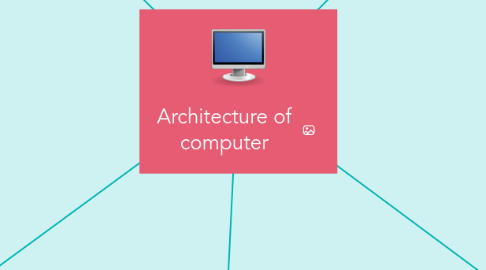Architecture of computer
por Olzhas Akbar


1. Microprocessor
1.1. The world's first microprocessor is "INTEL 4004" (1971)
1.2. 2.300 Transistors
1.3. 92600 Instructions per second
1.4. Clock: 740 kHz
1.5. Lithography: 10 μm
1.6. MCS-4 (chipset):
1.6.1. i4001: ROM (256 bytes) i4002: RAM (40 bytes) i4003: Shift register (10 bits) i4004: CPU (4-bit)
2. Computer
2.1. MotherBoard
2.1.1. CPU
2.1.2. Hardware(HDD or SSD
2.1.3. GPU
2.1.4. RAM
2.2. Power
2.3. Monitor
2.4. Mouse/Keyboard
3. Central processing unit(CPU)
3.1. A central processing unit (CPU), also called a central processor or main processor, is the electronic circuitry within a computer that carries out the instructions of a computer program by performing the basic arithmetic, logic, controlling, and input/output (I/O) operations specified by the instructions. The computer industry has used the term "central processing unit" at least since the early 1960s.
3.2. Traditionally, the term "CPU" refers to a processor, more specifically to its processing unit and control unit (CU), distinguishing these core elements of a computer from external components such as main memory and I/O circuitry.
3.3. Most modern CPUs are microprocessors, meaning they are contained on a single integrated circuit (IC) chip. An IC that contains a CPU may also contain memory, peripheral interfaces, and other components of a computer; such integrated devices are variously called microcontrollers or systems on a chip (SoC). Some computers employ a multi-core processor, which is a single chip containing two or more CPUs called "cores"; in that context, one can speak of such single chips as "sockets"
4. The First
4.1. A very good example of computer architecture is von Neumann architecture, which is still used by most types of computers today. This was proposed by the mathematician John von Neumann in 1945. It describes the design of an electronic computer with its CPU, which includes the arithmetic logic unit, control unit, registers, memory for data and instructions, an input/output interface and external storage functions.
4.2. When building the computer Z1 in 1936, Konrad Zuse described in two patent application
4.2.1. for his future projects that machine instructions could be stored in the same storage used for data, i.e. the stored-program concept.
